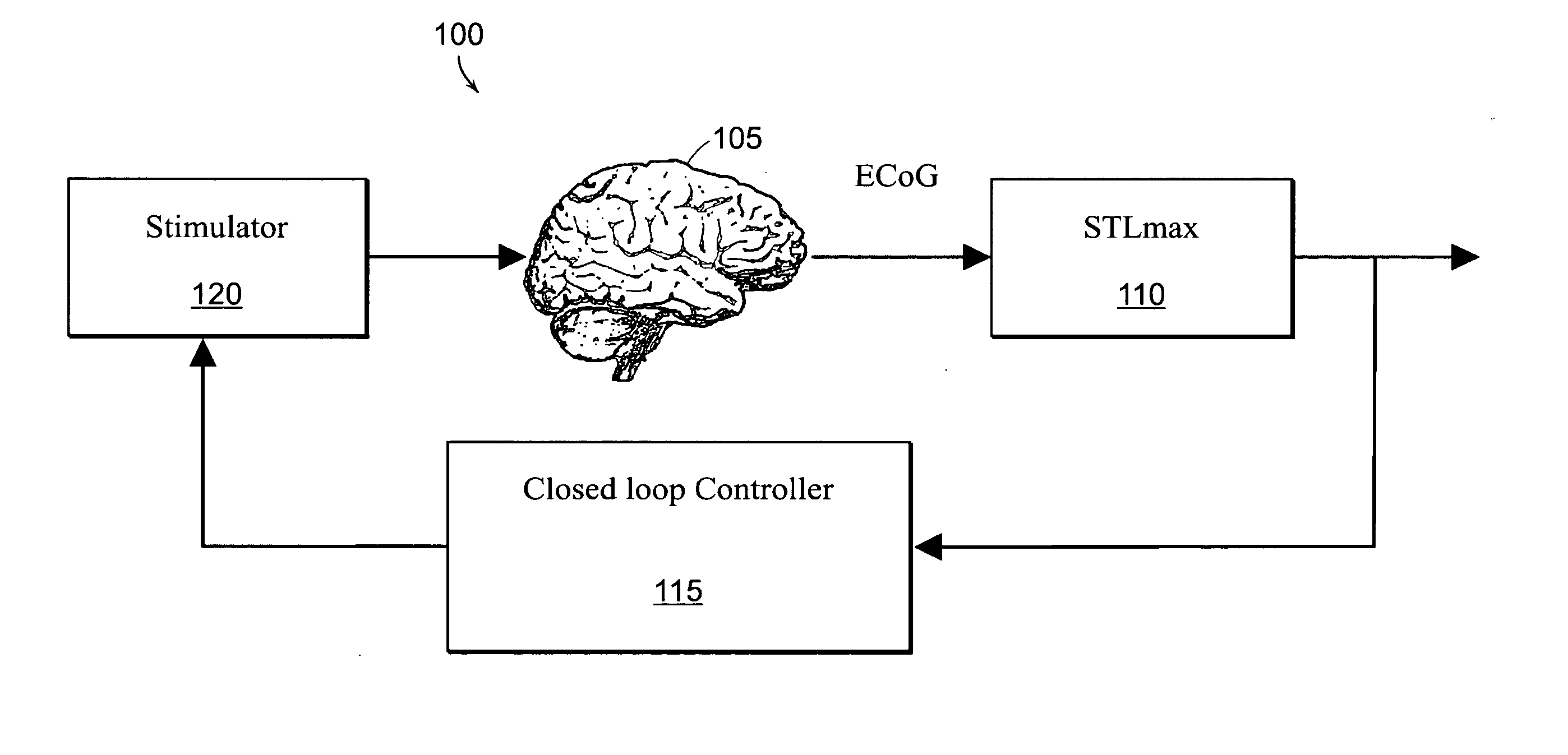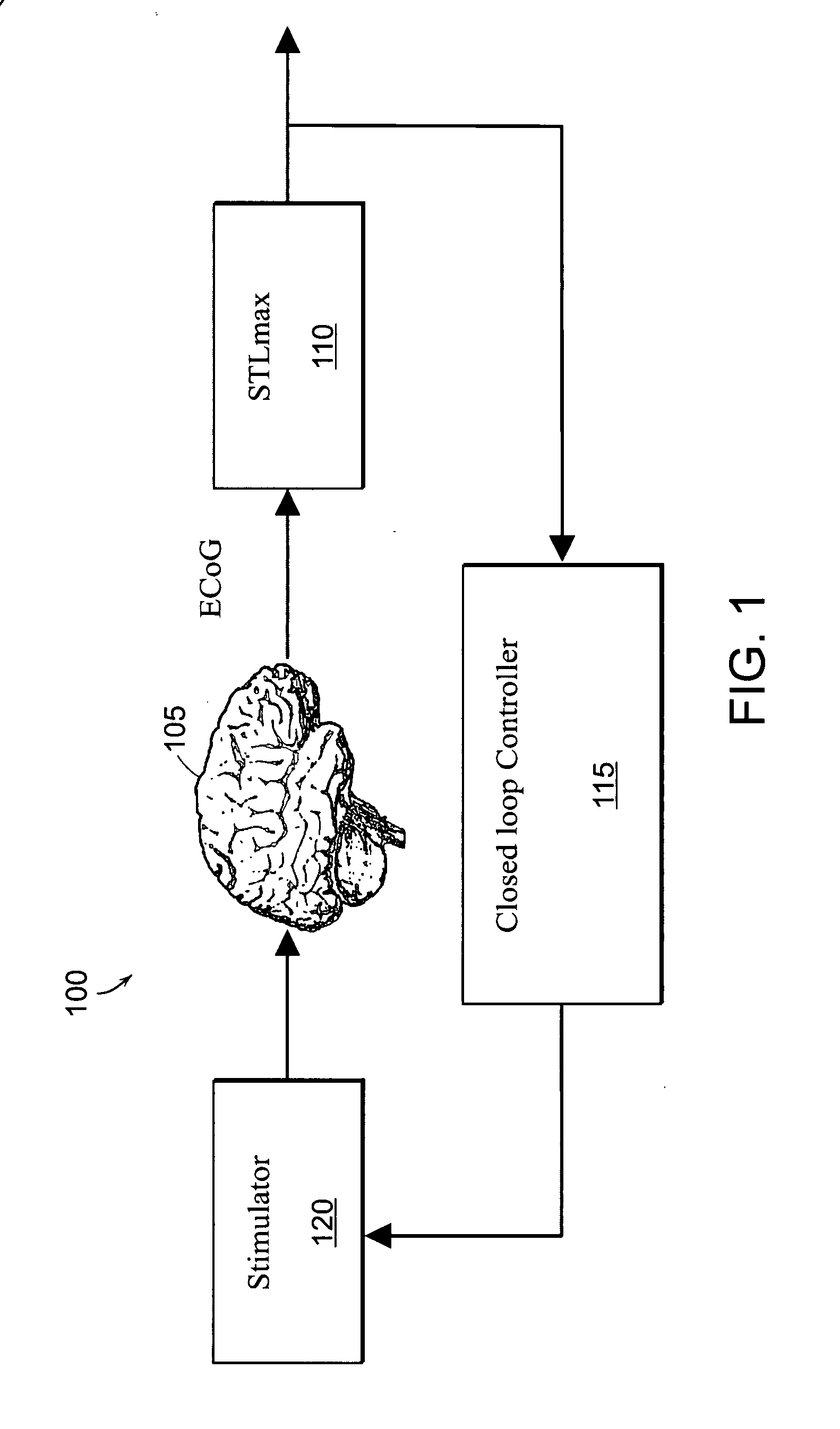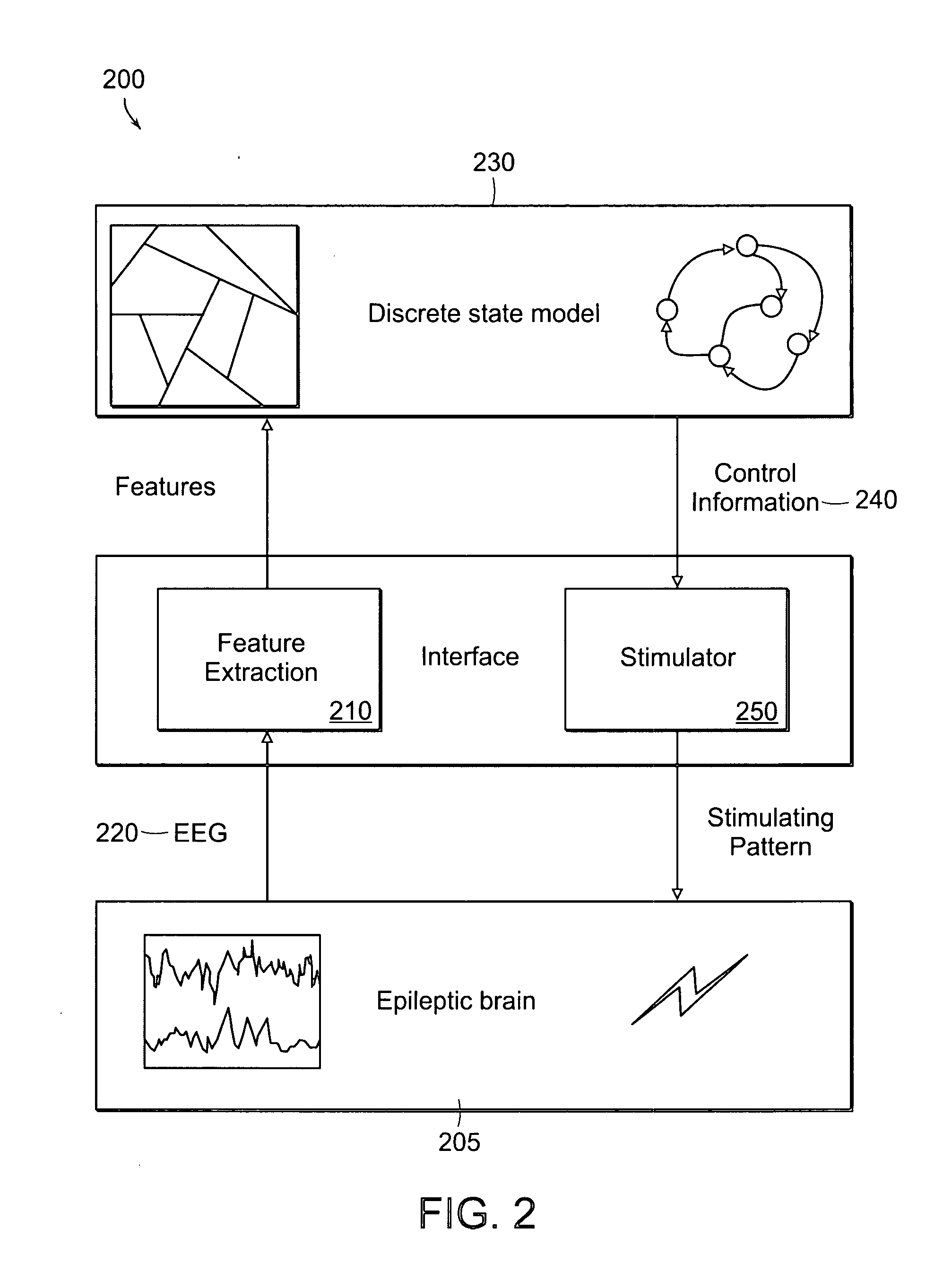Closed-loop state-dependent seizure prevention systems
- Summary
- Abstract
- Description
- Claims
- Application Information
AI Technical Summary
Benefits of technology
Problems solved by technology
Method used
Image
Examples
example 1
and Methods
[0190] The following materials and methods can be used as needed generally to practice the invention and to conduct studies as outlined in the Examples below.
[0191] 1. Rodent Model of Self-Sustained Limbic Status Epilepticus.
[0192] Young adult male 200-250 g Sprague-Dawley rats (age approximately 40 days) are anesthetized with isoflurane in oxygen and placed in a Kopf stereotacetic frame. The scalp is split and all soft tissue loosened from the dorsum of the skull. Bipolar insulated stainless steel electrodes are placed bilaterally in the posterior ventral hippocampus for stimulation and recording (from bregma AP −5.3, ML 4.9, DV −5.0 from dura, bite bar −3.3), as described by Paxinos and Watson (1998). The presence of a second electrode also enhances the likelihood of detecting a seizure. Additional monopolar reference and ground electrodes are placed over the cerebellum. All electrodes, intracerebral and reference, are attached to Amphenol connectors and secured to th...
example 2
sing EEGs from Human Subjects and Rat Model of Epilepsy for Evaluation of ATSWA for Seizure Prediction
[0213] This Example describes the characteristics of epileptic human and animal subjects and EEGs derived from these subjects used for testing an ATSWA system in accordance with the invention.
[0214] In one series of studies, an adaptive threshold seizure warning algorithm (ATSWA) of the invention was tested in a sample of 18 pre-recorded long-term continuous intracranial (N=10) and scalp (N=8) EEGs. These recordings had been previously obtained for clinical diagnostic purposes. Long-term (3.18 to 13.45 days) continuous recordings were made in these subjects using either multi-electrode EEG signals (28 to 32 common reference channels for intracranial recordings) or signals from 22 channels for scalp recordings (International 10-20 System of electrode placement). The placement of the intracranial recording electrodes is shown in FIG. 12. The positions of the subdural electrodes are s...
example 3
n of Performance of ATSWA
[0218] To evaluate the prediction accuracy of any prediction scheme, a parameter termed a “prediction horizon (PH),” also referred to as the “alert interval” (Vere-Jones, 1995), is used. This is necessary due to the impracticality of predicting the exact time when an event will occur. The PH has been defined as “the time left from the processing window to the unequivocal EEG onset of the seizure” (Litt and Echauz, 2002). After the issue of a warning, a prediction is considered as correct if the event occurs within the preset PH. If no event occurs within the window of the PH, the prediction is classified as a false prediction. The merit of a prediction scheme for a given prediction parameter is then evaluated by its probability of correctly predicting the next event (sensitivity) and its false prediction rate (FPR) (specificity). An ideal prediction scheme should have a sensitivity of 1, and a specificity of zero.
[0219] The unit of FPR used in this Example ...
PUM
 Login to View More
Login to View More Abstract
Description
Claims
Application Information
 Login to View More
Login to View More - R&D
- Intellectual Property
- Life Sciences
- Materials
- Tech Scout
- Unparalleled Data Quality
- Higher Quality Content
- 60% Fewer Hallucinations
Browse by: Latest US Patents, China's latest patents, Technical Efficacy Thesaurus, Application Domain, Technology Topic, Popular Technical Reports.
© 2025 PatSnap. All rights reserved.Legal|Privacy policy|Modern Slavery Act Transparency Statement|Sitemap|About US| Contact US: help@patsnap.com



